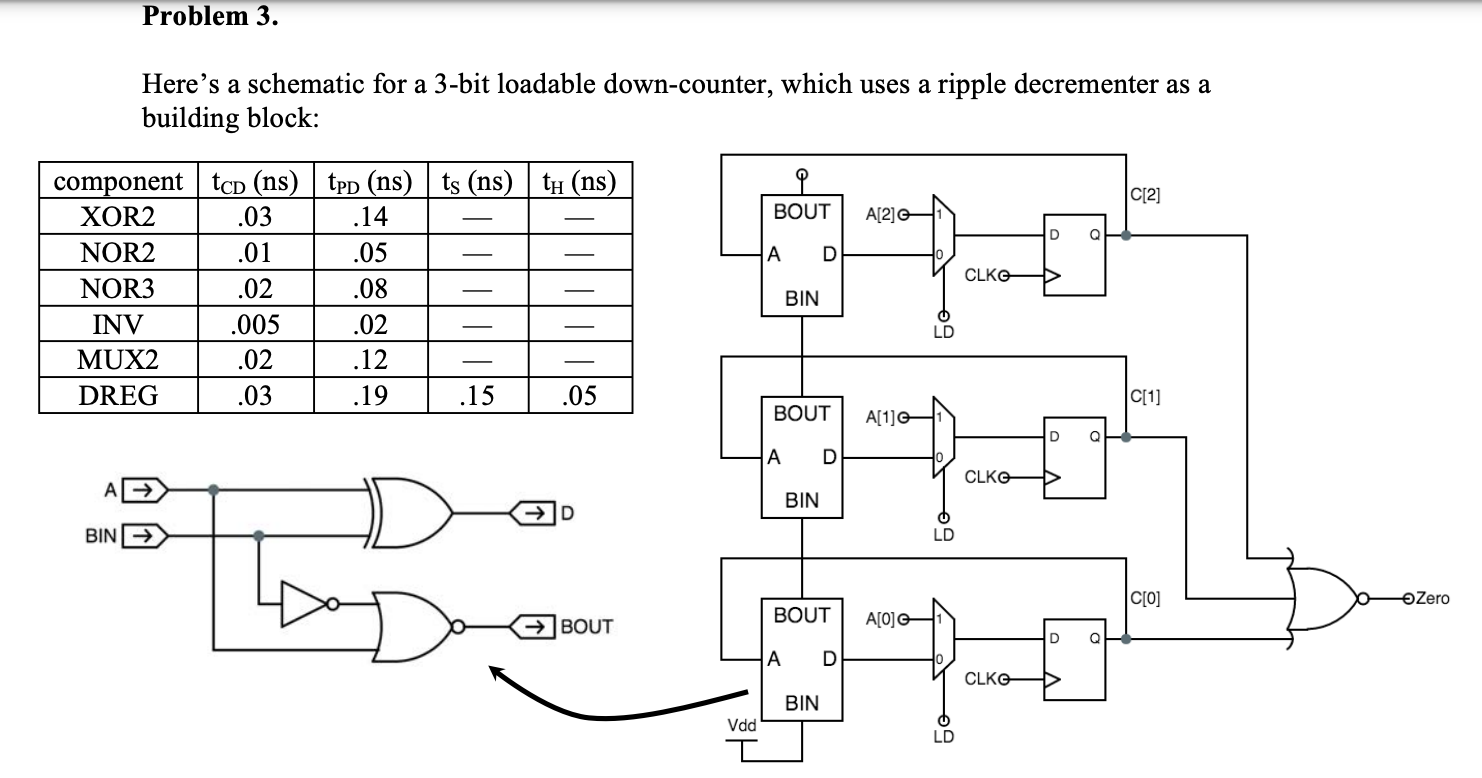I'm trying to work through the above sequential logic problem from MIT OCW's Computation Structures course. However, I'm having trouble calculating tpd of the Zero output.
I'm a complete novice at this, but I thought that when calculating tpd of a system like this, you calculated tpd of the longest possible path.
However, the answer key says that the answer is simply tpd, DREG + tpd, NOR3, so 0.19 + 0.08 = 0.27. Why would the tpd of the logic and the MUX not be factored in to this calculation?

